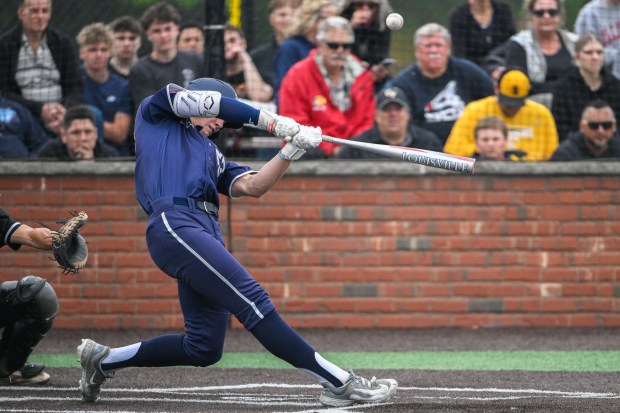The idea of developing an arboretum in the green space around the Indiana 49 and U.S. 20 interchange was rejected by the Indiana Department of Transportation.
Architecture students from Ball State University recently presented a study of the interchange during a Porter Plan Commission meeting. Jeremy Merrill, an assistant professor of landscape architecture, relayed by video feed the observations of his students.
The town of Porter was looking for ideas to enhance the appearance of the intersection as an entrance into the community. Porter Town Councilman James Burge, I-2nd, arranged for the Ball State University College of Architecture and Planning to do the study, free of charge.
The plan included an arboretum with winding trails, a mound, a playground and an amphitheater on the southeast side of the intersection, which would link up with the nearby Indiana Dunes Visitor Center off Indiana 49. Merrill even proposed having a pedestrian bridge over the entrance ramp.
“That plan was much more complex than what we might be able to have there,” said Cassy Bajek, an INDOT spokeswoman.
The reason why INDOT had to say no was the safety concern for people in the area of the interchange.
“We don’t want people to come in and out of the roadway,” Bajek said.
Bajek said there are clear parameters of what the town can do with the intersection. The town would be permitted to do landscaping projects and welcome signs.
Michael Barry, Porter’s building commissioner and development director, said the town will look at landscaping options and artwork to spruce up the area. He said it was clear, though, that INDOT doesn’t want people congregating within the intersection’s green space.
Barry said the town will talk with the Indiana Dunes National Park to coordinate with plans for the Visitor Center.
The Ball State students did pitch other intriguing ideas outside of the Indiana 49 and U.S. 20 interchange that the town would consider, Barry said
Barry said one proposal addressed the greater connectivity of trails within the Porter community.
In recent weeks, Barry said he has been working with Parks Director Brian Bugajski and Rob Albrecht-Mallinger, a plan commission and Board of Zoning Appeals board member, on the trails issue.
An obstacle is the recent Indiana state budget cut out money for the Next Level Trails program, which helps to fund the construction of trails, Barry said. The town wants to see its current trail that goes north on Waverly Road extended to Porter Beach.
Barry said what the town can do downtown is widen the sidewalk on Lincoln Street to 8 feet so it can accommodate pedestrians and bicyclists. That could help to connect the trail from Waverly Road and Lincoln Street to the Porter Brickyard Trail, which runs down Beam Street.
The Porter Brickyard Trail has a bridge over U.S. 20 and runs through the Indiana Dunes National Park, linking with the Calumet Trail/Marquette Greenway at North Mineral Springs Road.
Barry said the one thing he plans to do this year is install wayfinding signs for the Porter Brickyard Trail and other trails within the town to better inform bicyclists and pedestrians. There are practically no signs for the trails now.
Jim Woods is a freelance reporter for the Post-Tribune.




